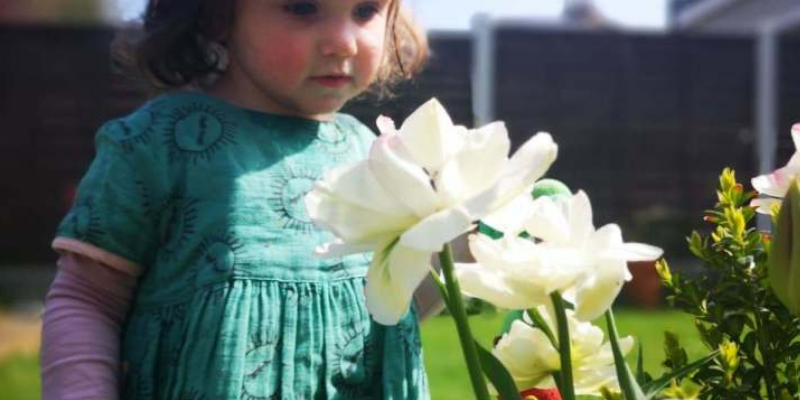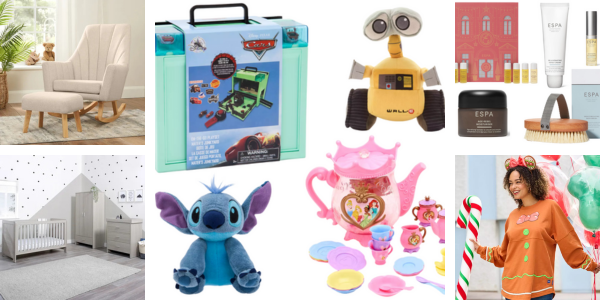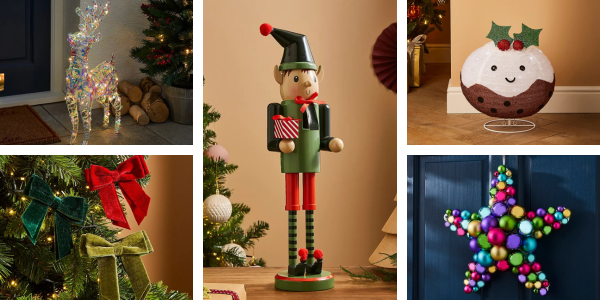

Being outdoors truly has many benefits for your children. Last week we discussed our top tips for gardening with your children, and how to make it an enjoyable experience for all! One of the potential projects we mentioned was building a sensory garden for your little ones to enjoy. Sensory gardens are amazing not just for older children who helped to create it, but also for newborn babies and young toddlers who get to relish in the abundant sensory experiences provided by such a garden! But how do you go about creating one? Carry on reading to find out.
Location, Location, Location….
Before you start planting, planning is key when it comes to sensory gardens. First of all you have to decide if you want to make it a large scale project and incorporate the entire garden, or whether you simply want to transform a smaller area that your children has access to. For those with younger children, a smaller area may be more suitable, allowing adults to relax nearby, whereas families with older children may want to tackle the whole garden so everybody can have their own section. Whatever you choose, make sure you have a rough idea of the areas characteristics and what you want the end result to look like. We have some fantastic inspirational photos on our gardening with children pinterest board.
The Wonderful Sights!
Sight makes up a large percentage of our worldly perceptions, and thus has a huge impact on development, especially in children. Therefore it makes sense to make a sensory garden as visually appealing and stimulating as possible. Obviously this will be unique to everyone. But if you think colour, pattern and shape, you are on the right track!
When thinking colour, people automatically think flowers, yet there are so many other ways of introducing colour into your garden. Leaves, trees and shrubs come in all sorts of beautiful tones and shades, as well as giving your garden depth and height variation. If you want to include a wildlife area, then bark and mosses can add darker shades to contrast the vibrancy of other plants, as well as supporting your mini residents.
Of course, colour isn’t just limited to the living aspects of a garden, fences and paths can all be painted or installed in a whole array of hues to provide a stimulating backdrop. Perhaps install some hanging decorations that will catch the sunlight, or some wall décor to give the eye something to look at. Getting creative with planters and décor can also bring some fantastic variance of shape and pattern to your garden!
The possibilities really are endless! If you want impact then choose colours from opposing sides of the colour wheel, but if you fancy something softer and more subtle then choose one main colour and then adorn your garden with complimentary colours to give a stimulating but put together appearance.
Stop To Smell The Roses.
Smell is of course a primary aspect of any garden. Be it scented roses or fragrant herbs, there is an option for everyone to enjoy. Personally, herbs provide an amazing array of smells, as well as being fantastic for teaching children about growing food and being safe for wandering mouths… so they are our preference.
However, plants such as Sweet Peas and Chocolate Cosmos give off enticing odours perfect for children. In addition to shrubs, for example, lavender which provide a strong continuous fragrance especially in the warmer summer days.
Like anything else, smell isn’t just limited to the plants, different types of wood can have very distinctive smells which you can explore through wood chipping paths or using different woods for different sections of garden bedding. These will be particularly distinct on a warm damp day!
What Can You Feel?
Touch is a brilliant way of getting your children more in touch with nature and more involved with the garden. When creating your sensory garden, try to include as many different textures as possible, from soft leaves to tough grasses. Hard stone paths can be contrasted by soft delicate petals. Rough bark provides a fantastic sensory experience alongside silky smooth leaves.
If you can, try to extend the textures past just the foliage. Pots and plant beds can come in all sorts of shapes and sizes, making this a perfect aspect to explore a whole range of textures. Why not invest in some silky smooth pots? Or create a bumpy stone edging? Perhaps you could even build a rough raised bed out of recycled sleepers?
For older children, ‘spikey’ plants can also be included, but please keep in mind that younger children will have to be supervised at all times if you wish to include plants such as cacti and other prickly friends!
Relaxing Sounds.
Perhaps one of the most under rated aspects of a garden is sound. yet how lovely is it to step away from the daily hustle and bustle, to just sit in peace and quiet, listen to the birds or a trickling fountain and just relax? Most of us can attest to the pleasure this beautifully simple sounds bring us, so why not let our children enjoy them too!
If creating a wildlife garden is on your agenda, then creating a pond with a fountain or a trickling stream is perfect for combining both sound stimulus and conservation. Water is known for its relaxing properties so is especially beneficial for children who struggle to find moments of calm, just ensure the water is not deep enough to risk drowning and any smaller children are supervised at all times when around ponds and deep fountains.
For those with minimal space or water not being an option, windchimes are your best friend. Not only do they come in a whole host of different materials and forms, but they create some truly beautiful sounds! Metal windchimes can be used to resemble the sound of water and create a ‘fairy-like’ atmosphere. Whereas wooden or bamboo windchimes are reminiscent of meditative spaces perfect for taking a moment of reflection.
Sound fences are particularly fun for children. If you have never heard of these, picture a giant xylophone made of recycled household goods, from bottles to tins the possibilities are endless and your children will have great fun making music in their own garden!
A Taste Of Nature…
Of course when it comes to children, especially young toddlers, everything ends up in their mouths. Be it plants, sticks, stones, you name it, it will probably end up in their mouth at some point. So instead of trying to make sure they don’t eat something that could harm them, why not embrace exploration of taste?
Fruit trees, herbs and vegetable plants are perfect for letting your little one safely explore taste in the garden. There are even lots of edible flowers you can include to make your garden totally child friendly! You can find infographics of these on our pinterest board.
Not only will including an edible section provide your little one with lots of different tastes to explore, but it also allows you to teach them about growing food and how to be more sustainable, a win win in our eyes! Our girls absolutely love having the freedom to pick and eat whatever they want, and we certainly enjoy not having to watch over their every move in the garden!
This also applies to paths, décor and hard landscaping, if you have a little one prone to eating stones like us, then opt for dirt paths or stepping stones that don’t pose as a choking hazard!
No matter what the size of your garden, or your personal preference, sensory gardens are for everyone to enjoy! The natural world has so much to offer and there are so many different options to explore. Not only do sensory gardens give your children the outside space they need, but they aid development and create wonderful memories for your family to treasure forever.
What would your dream sensory garden look like? If you have already started to create one be sure to share your images and tips in our gardening forum! We absolutely love to see everyone’s creations! For inspiration see our latest pins on our pinterest board!
Don’t forget to follow our adventures on Instagram & Facebook!



.png)






.jpg)




